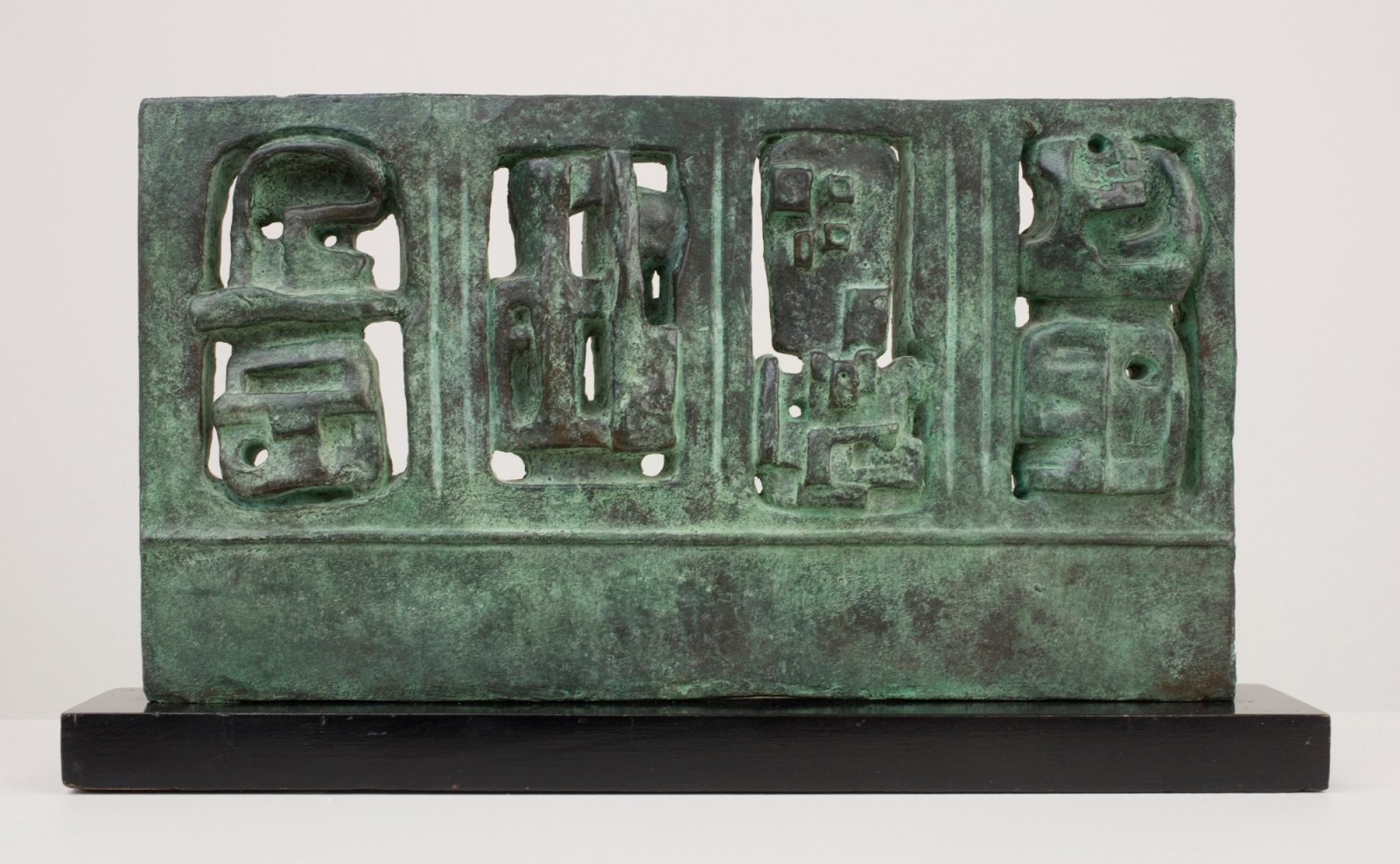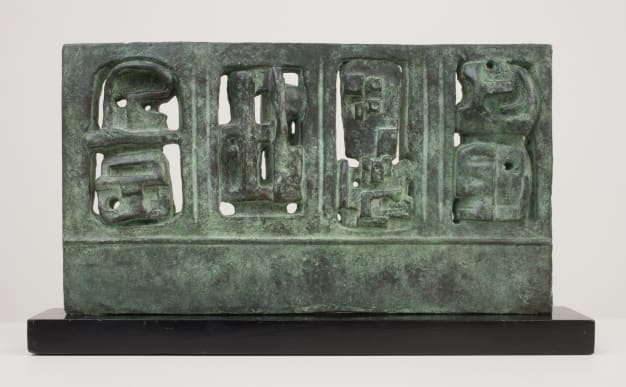Rising to the challenge of antiquity and throwing off the restrictions of wartime austerity, Henry Moore gave a distinctive face to the luxurious office building of American magazine publications Time and Life.
InSight No. 149
Henry Moore, Time/Life Screen: Maquette No. 4, 1952
Since the monumental temples of Classical Greece, built in the fifth and fourth centuries B.C., frieze sculpture has been a pinnacle of refinement in western art. Although in some respects it resembles pictorial art, the illusionistic arrangement of figures on a flat surface, frieze sculpture makes one significant additional demand of an artist—that the illusions of space and figural modelling should be achieved by subtle gradations of relief. Too shallow and the illusion will disappear into the surface; project too far and the frieze loses its coherence and becomes something else. From Donatello to Rodin, the most celebrated sculptors in the western tradition have mastered the art of relief. Henry Moore (1898–1986) is no exception.

In 1952, Moore was invited to produce a carved screen for the new Time Life Building on New Bond Street, London. By size alone, it was one of his biggest public commissions in the fifties. The finished work, delivered the following year, involved a reinvention of the frieze format. Instead of a narrative sequence, Moore devised a group of four organic beings visible from both front and behind—from a roof terrace and the street below. The figures were clearly distinguished from the plane of the wall, the perforations through and around each one giving them a degree of autonomy from the architectural casing. The decorative quality of these humanoid ‘motives’ was likely a self-conscious contrast with Moore’s initial commission for the building: a reclining bronze figure in a Hellenistic idiom destined for the rooftop terrace. Describing the project afterwards, Moore said he had ‘welcomed the chance of working simultaneously upon two such entirely different sculptural problems.’

In an official list entry, Heritage England explains that the reason for designating the Time Life Building was partly owing to the ‘unusually rich integration of art and architecture’. Above the entrance was an abstract winged creation in bronze by Maurice Lambert. At the top of the main staircase, a sculpture by Geoffrey Clarke resembled an inverted coat stand. The interiors were designed by Hugh Casson, Misha Black and others, and there was an abundance of map walls, glass shelves and bespoke furniture. Every feature was recorded in vivid black-and-white photographs for the Architectural Press, the archives of which are held at the RIBA. The imaginative framing, perspective and detail of these photographs, sometimes focusing on a single chair or document tray, makes them a source of interest in their own right. Most are devoid of human presence in the showroom manner of prestige marketing, but the execution suggests a degree of artistic pretension equal to the quality of the subject.

To develop his large-scale screen Moore explored a series of four different iterations in small-scale maquettes. These were subsequently developed as editioned bronzes. The first of these included five component figures in five sequential units of equal size, their supple rounded morphologies clearly distinguished against the rigid, rectangular hollows that frame them. The second used more figures, some placed in irregular shaped hollows. The third dispensed with the sequence of uprights and introduced some horizontal units. In the artist’s estimation, ‘the fourth maquette I thought was better and more varied and so became the definitive maquette, although a further working model produced other change.’ Only in the fourth maquette did Moore succeed in integrating the figures within the block, rounding the corners and creating more fluid points of contact between figure and frame.
As his attention turned to realising his model at scale and in situ, Moore began to explore the idea of rotating the ‘motives’. He wanted to put them ‘at an angle to the surface of the building instead of continuous with it’. This was quickly found to be too difficult and expensive, yet the construction of the screen itself and the related maquettes partially realises this desire. As with much other frieze sculpture in the annals of western art, his work for the Time Life Building functions at once frontally—a pleasant picture-like surface—and as a pulsing, rounded and multifaceted construction.

IMAGES
Marble relief from the west frieze of the Parthenon, 438 – 432 B.C., British Museum
Time Life Building with Henry Moore’s screen, 1954, image courtesy Mermaid on Flikr
Henry Moore, Time/Life Screen: Maquette No. 1, 1952, Private Collection
Henry Moore, Time/Life Screen: Maquette No. 4, 1952, bronze, 18 x 33 cm

